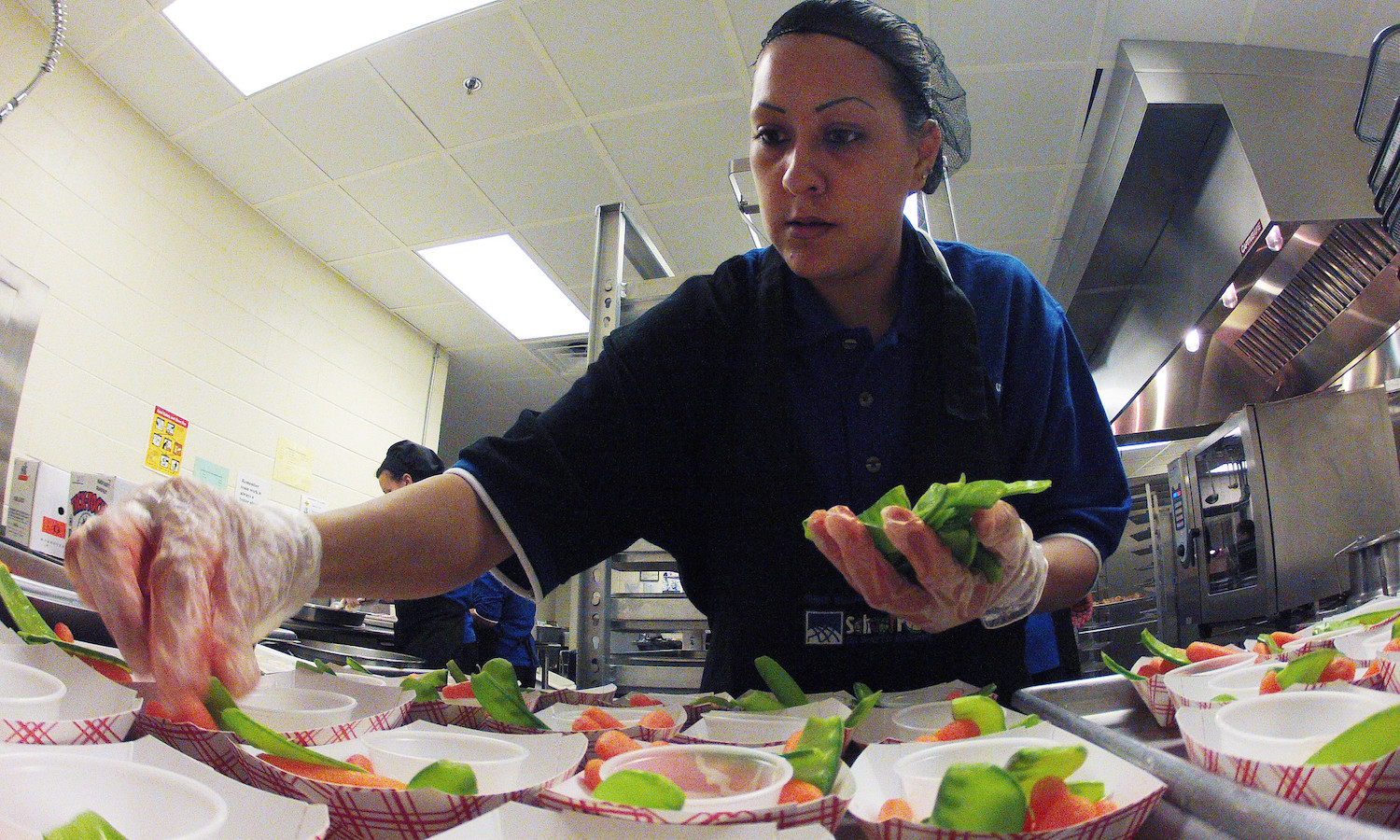A version of this piece was featured in Food Tank’s newsletter, released weekly on Thursdays. To make sure it lands straight in your inbox and to be among the first to receive it, subscribe now by clicking here.
Recently, I received a text. And it was a good one.
It was from Alice Waters.
She and I know each other, but I still get starstruck talking to my culinary heroines. At her restaurant Chez Panisse, she was instrumental in bringing the names and faces of California agriculture to the table. And now, with the Edible Schoolyard Project, she continues to boost the school gardens movement and food education.
She was part of an important generation of women like Julia Child and Cecilia Chiang who truly paved the way in what was—and remains, to some degree—a male-dominated fine dining restaurant landscape.
This week, Food Tank members had a special opportunity to chat with Alice Waters at our virtual member meeting. We’ll be having more of these unique members-only conversations with other food luminaries like Alice, so I hope you’ll join Food Tank so you can connect with us.
Here’s why I’m bringing this up: Something Alice so many of us are very passionate about is where our food comes from, especially in schools. How schools procure food shapes how they literally and metaphorically nourish the next generation.
This is a major driving force behind Chez Panisse, and it also motivates the Edible Schoolyard Project. Having gardens in schools helps kids and teachers learn in different ways—not only to better understand subjects like math, chemistry, and social studies, but also to grasp that food doesn’t just come from a grocery store.
As far as school gardens go, we’ve lost our way over the past 100 years: In 1906, according to the USDA, there were roughly 75,000 school gardens in the U.S. As of 2019, just over 12,000 schools have gardens. Growing our own food, I think, gives people of all ages a better appreciation and respect for how difficult but also enriching the process is.
“When we support the people who grow the food for the schools, it’s the biggest gift that we can give the next generation,” she told us during the conversation.
And even if we aren’t able to start gardens, supporting schools and other institutions that are taking food procurement seriously is a big deal. Through better procurement practices, Alice told us, we can empower farmers, support the land, and address the climate crisis.
Sadly, in many budget-strapped schools, nutrition and local sourcing often fall by the wayside. In 2021, the USDA measured nine criteria for school food procurement. Cost was #1—the highest priority consideration—and nutrition was #9. Many schools said they wanted to support local producers, but few had concrete plans in place to do so, and even fewer could actually afford it.
But this is starting to change. During Covid-19, we’ve seen that farm-to-school programs are vital lifelines for small producers, and policymakers are paying attention. In New York State, for example, legislators introduced a bill that would make New York the first state to implement a values-based approach to food purchasing. Food Tank has been covering the legislation HERE.
True change in school food procurement takes both advocacy, Alice Waters told Food Tank members this week, and also “cheerleading from the federal government, from the state governments.” It’s imperative to make sure good food policies are ingrained and enshrined in our local, state, and federal laws.
And alongside those efforts, institutions like schools don’t have to wait to make change. Local school boards can embrace food and gardening programs, like the curricula created by the Edible Schoolyard Project. The Alice Waters Institute for Edible Education also recently partnered with the University of California, Davis, to create a training center for K-12 educators and a research hub for regenerative ag leaders.
Because every little bit of education helps. Here in the U.S., our students receive about 8 hours of nutrition education a year, according to the CDC. That’s shamefully low, and too small to really be effective—you’d need between 40–50 hours to bring about behavioral change.
So I hope you’ll reach out not only to your local elected legislators but also to school boards and business leaders to encourage them to take food procurement seriously. And I hope, too, that you’ll join Food Tank HERE so you can connect directly with food luminaries like Alice Waters at our exclusive member meetings.
More from our chat with Alice is on this week’s episode of our podcast, Food Talk with Dani Nierenberg, so I hope you’ll listen HERE, and email me as always at danielle@foodtank.com with your thoughts and questions.
Articles like the one you just read are made possible through the generosity of Food Tank members. Can we please count on you to be part of our growing movement? Become a member today by clicking here.
Photo courtesy of U.S. Department of Agriculture











